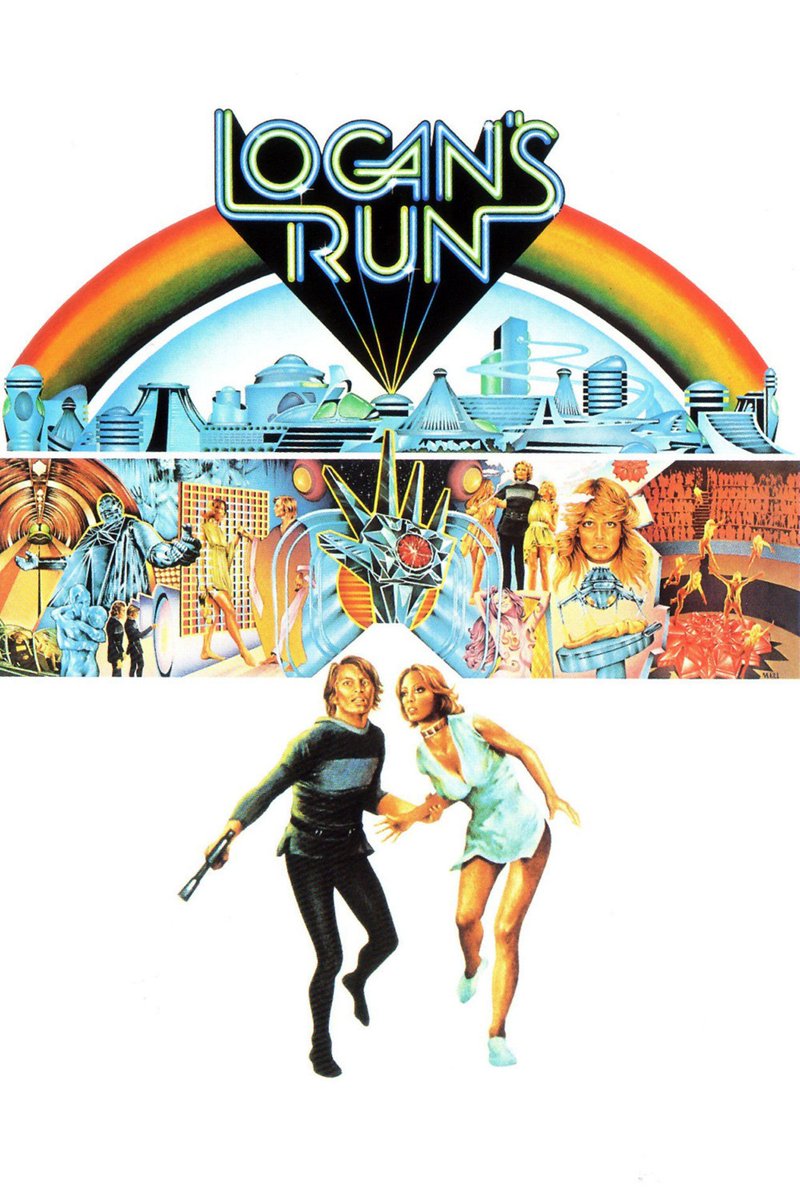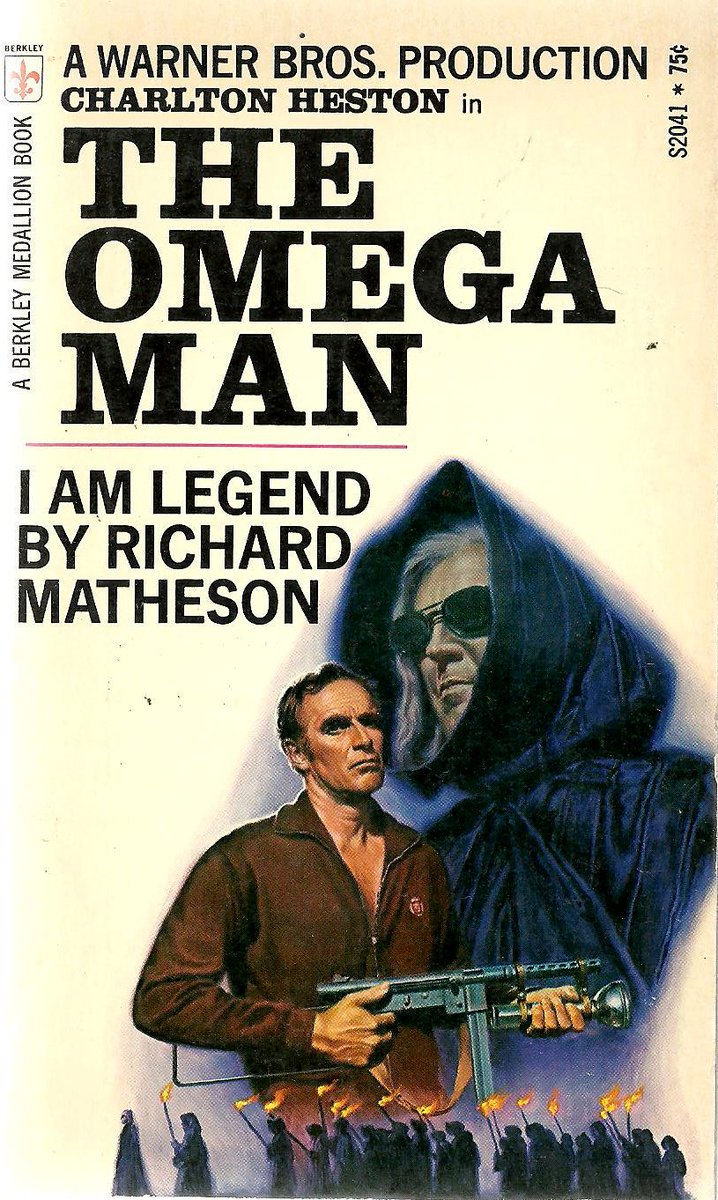
Today's pulp question: which film do you think was more influential - Logan's Run or Tron?
I'm somewhat torn here. Logan's Run has a great dystopian narrative, and Tron really pushed the envelope on computer SFX. I'd happily watch either, but what do you think?

I'm somewhat torn here. Logan's Run has a great dystopian narrative, and Tron really pushed the envelope on computer SFX. I'd happily watch either, but what do you think?


Well let's start with Tron: a tech-noir classic that pushed the boundaries of early CGI as well as using more traditional animation and post-production skills.
Get your light cycle ready...
Get your light cycle ready...
"TRON" is a debugging command in some versions of BASIC and stands for TRaceON. It sounds cool and geeky.
Unsurprisingly the 2010 Tron movie sequel didn't use its complementary command: "TROFF"
Unsurprisingly the 2010 Tron movie sequel didn't use its complementary command: "TROFF"

The original Tron movie was released in 1982, four years after Disney's earlier film The Black Hole had established the studio's emerging interest in sci-fi. However Tron had been in development since 1976 and was initially pitched as a traditional animated motion picture. 

Director Steven Lisberger and Bonnie MacBird wrote the Tron script, and after discussion with Disney they decided to use live-action elements with both backlit and computer animation into the movie. This would test the technology of 1982 to the limit. 

Tron is a film about a computer programmer transported inside a mainframe computer. He has to compete with the other programs and play a number of life-or-death games in his attempt to escape.
It's The Matrix meets Squid Game, but with laser frisbee.

It's The Matrix meets Squid Game, but with laser frisbee.


The look of Tron is influenced by two things: motherboards and vector graphics. Most computer aided design at the time used wireframes, as did popular arcade games such as Battlezone. The vector look, especially on a black background, was 80s cool! 

The Tron cast included Jeff Bridges, Bruce Boxleitner, Cindy Morgan and a scene-stealing performance (I think) from David Warner as the villainous Sark. 

Information International provided most of the CGI on Tron using a Foonley F-1: a high-speed, 36-bit computer with 512 bytes of memory. That's enough to power a Tron Light Cycle and way more than the Apollo moon lander had. 

To help share the CGI load of Tron, New York's MAGI company came on board with more computing power and the SynthaVision system: a library of 25 pre-formed solid CGI shapes. Without MAGI the Light Cycles would have ended up all polygons. 

Jean Giraud (Moebius) was the main costume and set designer for Tron. Backlit animation was used for many effects, so costumes and sets were shot in monochrome with colours added in post-production to create a shimmering futuristic look. 



Alas Tron was up against Blade Runner, E.T. and Wrath of Khan at the box office so it wasn't a huge hit. However the Tron arcade and home video games helped make up the box office shortfall, though the other movie merchandise was a bit so-so. 



Tron is an analogue rendering of a digital future. Disney took a risk and put its best minds to it, took the concept seriously and built an immersive sense of a future world that really sticks in the mind. It still looks way cool today: the Meta World brought to life. 

Now let's take a look at Logan's Run. It's a film that's overshadowed by Star Wars, but it rode the wave of early 1970s dystopian sci-fi with a certain style. 

The film version of Logan's Run is based on the 1967 novel of the same name. In the book the Earth's population and resources can only be balanced through the death of everyone once they reach the age of 21. 

Development of a film version was slow. George Pal had been trying to film Logan's Run since the late 1960s, using a script by Richard Maibaum. Frustrated by the lack of progress he left the project in 1974 to make Doc Savage for Warner Bros. 

In the end it was the success of two other dystopian films - The Omega Man and Soylent Green - that persuaded MGM to take Logan's Run out of development Hell (where it had been since 1969) and to begin filming in 1975. 



David Zelag Goodman rewrote the Logan's Run script, making the 'death age' of the characters 30 instead of 21 to give more casting flexibility. Michael York (33) and Jenny Agutter (23) were cast as Logan 5 and Jessica 6. 

Logan's Run used many locations in and around Dallas for filming, including the Dallas Market Center shopping complex. Wide-angle lenses were used for shooting and Logan was the first movie to use Dolby Stereo on a 70mm print. 

The Carousel in Logan's Run - where 30 year olds were urged to 'renew' - was an idea from earlier scriptwriter Stanley Greenberg. It remains one of the most complicated wire flying scenes ever filmed. 

Logan's Run could have looked very different if Charles Berliner's original 1974 concept costume sketches had been used. As it was the film opted for Romanesque togas and utilitarian Sandman outfits. 



Despite its themes of sex, violence and hedonism - and the scene in the 'Love Shop' - Logan's Run was given a PG rating. Farrah Fawcett-Majors also added to its teen appeal, after Michael York persuaded producers to cast her in a supporting role. 

Critics were divided about Logan's Run on its release: they applauded the special effects but questioned what the point of the story was. If there was no 'Sanctuary' outside the city why did the city need to exist, or its citizens need to die at 30? 

However Logan's Run did help restore the financial fortunes of MGM, and a spin-off TV series and comic book helped establish the franchise in the public's mind. 



William F Nolan wrote two sequels to Logan's Run: Logan's World and Logan's Search. World involves Logan and Jessica returning to Earth from Sanctuary (a space station orbiting Mars), whilst Search involves life in a parallel universe. 



Logan's Run shares many themes with Huxley's Brave New World: a dystopia posing as a utopia, artificial birth, eugenics as a part of a model society, and characters who slowly realise that the alternative to perfection is not always what it seems. 

Logan's Run and Tron are slightly forgotten now, which is a shame as they both attempted to answer one of the oldest queations in sci-fi: why are we afraid of the future? They were both stylish and unsettling, and I think still very much worth rewatching.
But what do you think?

But what do you think?


(Pulp correction: the Foonly F1 used for the CGI on Tron had 2MB of memory, with a disc that had no more than 330MB of storage.) 

• • •
Missing some Tweet in this thread? You can try to
force a refresh






















